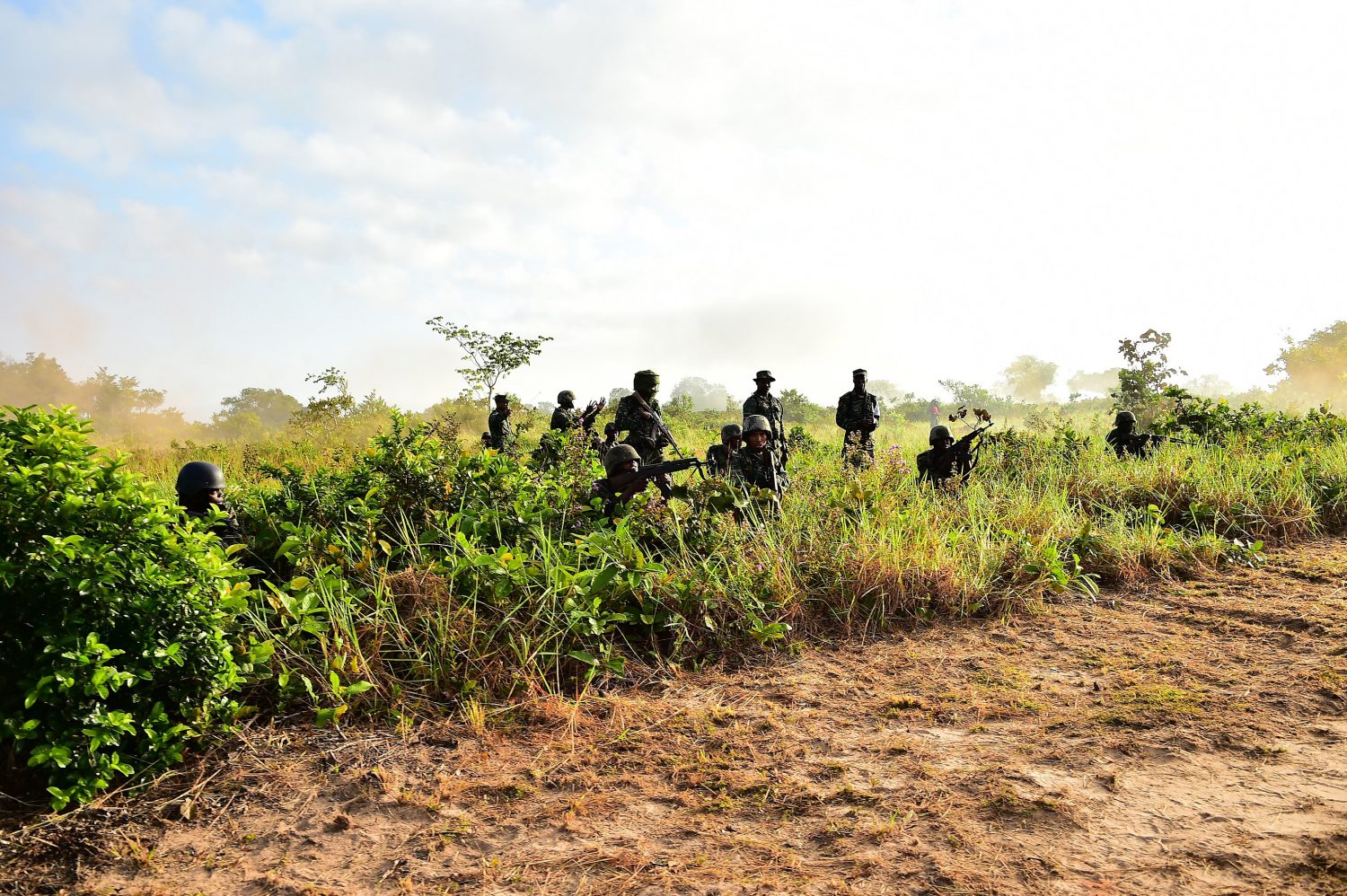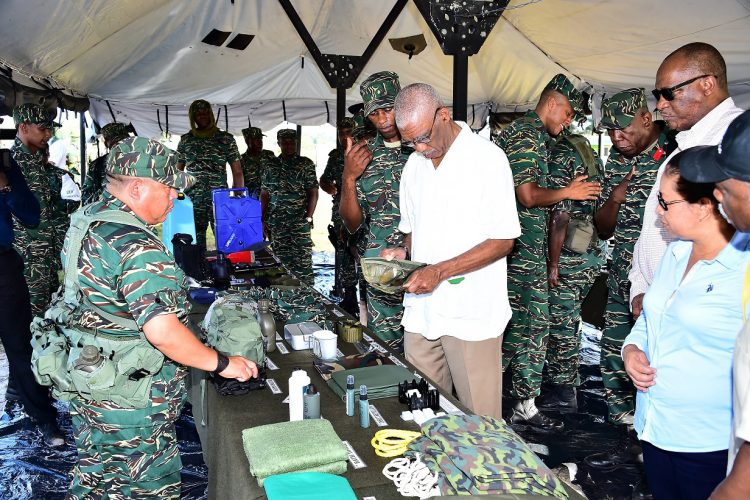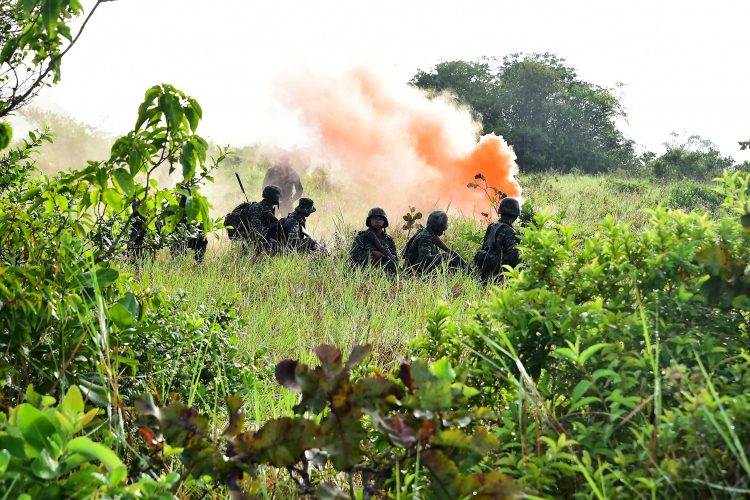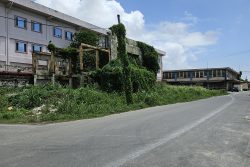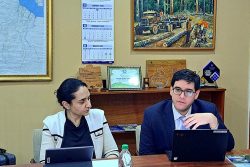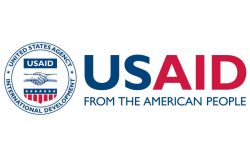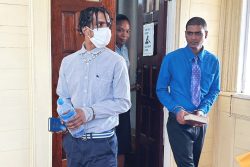Guyana Defence Force (GDF) troops on Friday completed the two week-long tactical field exercise ‘Ironweed,’ which President David Granger said has served to reaffirm the army’s readiness to protect the country’s territorial integrity and to meet any threat that may arise.
Granger’s comments were made after witnessing the “final attack” section of the exercise at the Colonel John Clarke Military School, at Tacama on Friday morning.
According to a statement issued on Friday evening by the Ministry of the Presidency, Granger, who is the Commander-in-Chief, emphasised the importance of the training course, while calling border security the country’s biggest challenge.
“We have challenges to face in Guyana and the biggest challenge is the security of our borders. This exercise is an exercise dedicated to ensuring that Guyana is ready to protect its borders and this is something that you must never forget. Guyana has over 3000km of borders and we are a small population but in protecting our borders, we have to ensure that we have the mobility and the correct deployment so that every part of our borders would be secured,” he was quoted as saying.
Following the recent discovery of a twin-engine Beechcraft aircraft in Region Nine on August 13 and another abandoned aircraft in September, 2016, just miles away from the area, Granger told the troops that it is more important than ever that Guyana takes the necessary steps to protect its borders.
“We have to protect our fragile environment. People can come across our borders with road building equipment [unknown] to the centre, build airstrips and maybe get Guyanese to collaborate with them to remove our precious minerals and other commodities so the GDF has to take on a greater role in protecting our territory and protecting our environment from degradation and from despoliation. We have to prevent illegalities throughout the country,” he said.
Granger also said that to demonstrate their commitment to the protection of the citizenry and the country’s assets, the government and the Defence Board have been working with the GDF to ensure that steps are taken to equip the service members with the tools that they will need.
The ministry noted that in 2015, during a meeting with the members of the GDF at Base Camp Ayanganna, where he had announced the Total National Defence Policy, Granger had committed government’s support to the re-organisation and strengthening of the GDF on five pillars: personnel, readiness, infrastructure, morale and equipment, with emphasis on the Air Corps, the Coast Guard and the Engineer Corps. It said the re-equipping process has begun and following the “final attack,” Granger reviewed a display of new field equipment, which has been acquired by the force. This included a combat support field medical hospital and communications apparatus.
Lieutenant Commander Roger Nurse, who briefed the President on the communications apparatus, was reported as saying that the ranks and officers of the force were better equipped this year while they were in operational mode due to the acquisition of the new equipment. Additionally, the force was able to utilise its collapsible drone to conduct aerial reconnaissance, during the exercise.
Granger was accompanied by Minister of Foreign Affairs Carl Greenidge, Minister of State Joseph Harmon, Minister within the Ministry of Communities Dawn Hastings-Williams, Chief-of-Staff of the GDF Brigadier Patrick West and other senior officers.
Marked improvement
The statement said Harmon, who serves as the Secretary to the Defence Board, explained that the army has been better equipped this year as the government is working with local and international partners to build capacity and strengthen security.
“The equipment, which you saw here this morning has marked an improvement over what we had in 2016 on the exercise. Today you saw some improved equipment so far as our communication is concerned. We have some radios with the capacity to be able to do texts; to do data. For the medical corps, we have seen a field hospital, which included a dentist and full dentistry and a triage areas and the other areas so we are able now to actually deploy medical facilities and medical personnel from the brigade down to the battalion. We can deploy medical facilities down to the company and right down to the level of the platoon,” he said.
Harmon also said that the final attack during the ‘Ironweed’ exercise demonstrated an improvement in the combat readiness of the GDF to operate in the various terrains of the country, such as open country, close country and jungle.
Granger, the statement said, added that mastering the country’s various terrains will increase confidence in force readiness. “The most important lesson you can take away from this is the need to protect your territory, our country. Without your vigilance, your effort, your expertise, this country will not be able to sleep safely at night. We have islands in the Essequibo River and three of those islands are bigger than the British Virgin Islands. We have wetlands in Canje and elsewhere. We have highlands, some covered with clouds, grasslands, you have lakes in the Essequibo, you’ve got rainforests, you’ve got rivers and rapids, but you, the soldiers of Guyana, have got to be able to operate all of those terrains by day or by night, whether the sun is shining or the rain is falling. That is why you must train rigorously and regularly and I never want to hear again that the GDF passed a training year or cycle without a major field tactical exercise,” he said.
Meanwhile, West said the lessons of the exercise must be utilised to further improve operational efficiency. “The GDF, as we continue to evolve, will continue to practice not only in this area but other areas to ensure that we build proficiencies in every area. We hope that the force can do total deployments in the close country operations and total deployments for internal security operations, which are exercises that are planned differently. As we build the model of exercises for future years, we will further expand our platoon company and battalion training with more emphasis placed on the operational skills of the soldier,” he was quoted as saying.
The statement noted that the exercise commenced on August 11, with the final contingent of troops moving into the exercise area, located in the jungle and savannahs of Tacama. The exercise was designed to assess the troops in Close Country Warfare and Open Country Warfare simulations of battle. A similar exercise, ‘Homeguard,’ was conducted at the same location last year. It was noted that the exercises are part of the continuous training for GDF officers and ranks of the GDF, and are also designed to enable them to test theories and develop new strategies related to how warfare can best be executed.
The GDF is currently engaged in two major operations: ‘Operation AXEL,’ which is focused on border deployment and protection, and ‘Operation Clean sweep,’ which is aimed at recapturing the four prison escapees still on the run.
